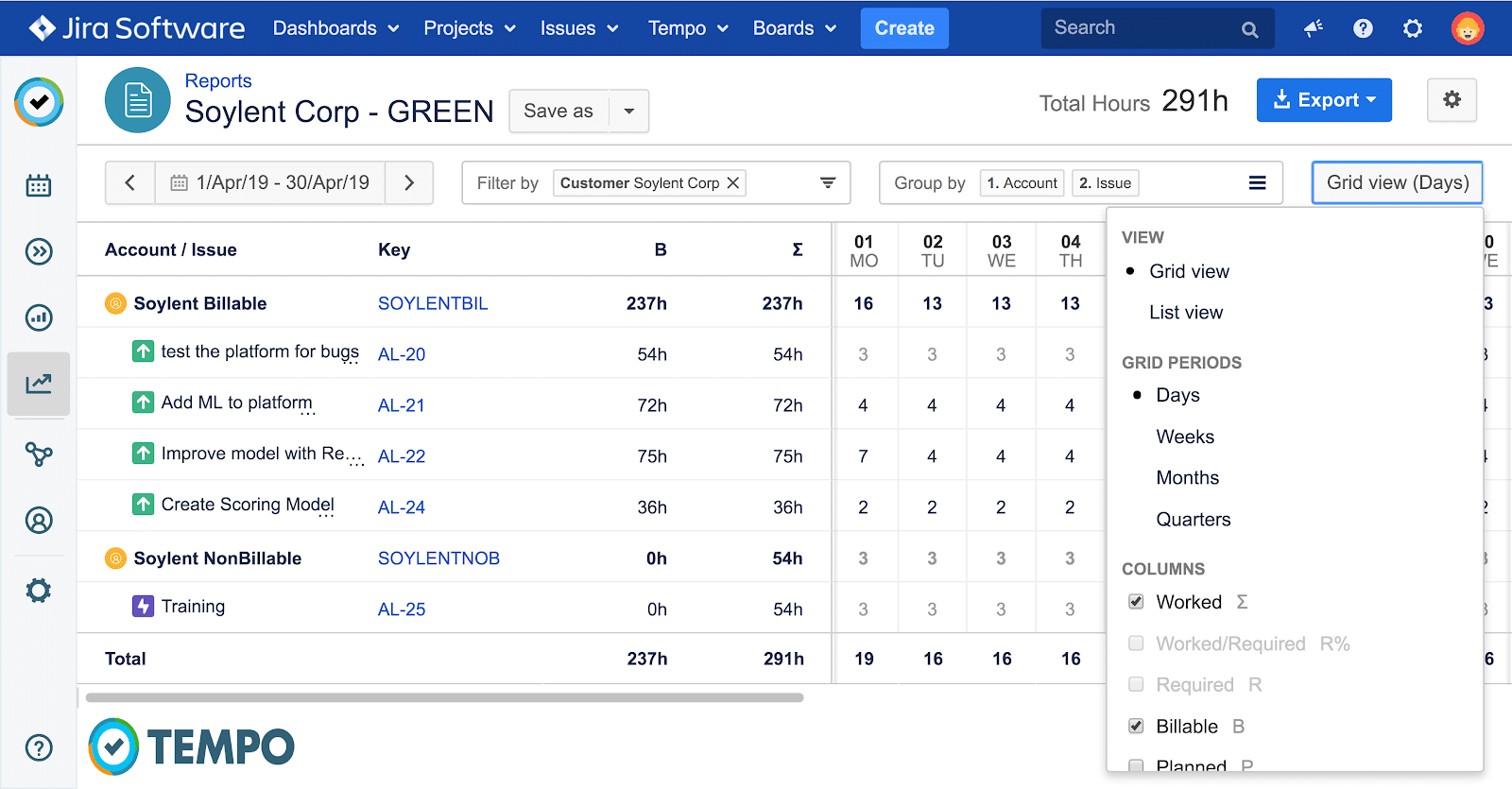Track time to save time with Tempo Timesheets in Jira

This is a guest post by Maxime-Samuel Nie-Rouquette, the Global Partner Marketing Expert at Tempo – one of the largest, award-winning, top-selling app vendors in the Atlassian Ecosystem. Max ensures good communication and relations with Tempo Partners and aims to make a positive impact through collaboration.
Most of us are short on time. The typical person spends a third of his day at work, where there is a continuous influx of work to be done, but only so many hours to do them. So how can we minimize the time we spend doing menial tasks? How can we ensure that we’re able to get everything done within deadlines and satisfy all the stakeholders? How can we save time? Thankfully, there is an existing solution in Jira that answers these questions: Tempo Timesheets.
A quest for efficiency – the constant struggle
Here are some interesting stats collected from law firms in the 2018 Clio Legal Trends Reports: lawyers only have a utilization rate of 30%, meaning that only 2.4 out of typical 8 hours workday are dedicated to billable work. In addition, the report also indicates that lawyers fail to derive revenue from 21% of their working hours. This report further suggests that companies often fail to acquire such insights, which inevitably hinders companies’ growth. Considering that in this case most lawyers make their living through billable time, it is logical to assume that they would want to increase their billable work as well.
With a medium that allows an overview of worked time, employees can reflect on their past work and adapt their focus to maximize the efficiency of their day. For example, if they discover that most of the day is spent on menial tasks (like answering emails), then unlocking this information through time tracking would make it possible to rebalance the work schedule. A company could go even further by implementing some automation to accelerate menial tasks and reduce the time that employees spend on them.
Picking the low hanging fruits
Once the time is tracked, it becomes extremely easy to quickly organize the data so that it may be used for numerous purposes, such as invoicing & billing, measuring CAPEX/OPEX, or even payroll. The information is ripe for the taking and unlocks numerous benefits for both the users and the company. For example, an employee can determine whether he is spending enough time learning new skills or completing the tasks he was hired to do.
On the flip side, the business is able to observe trends and make forecasts based on past data. REDspace, one of Tempo’s clients, looks at it when estimating the time a project will take, which helps management understand its feasibility, set realistic deadlines and keep stakeholders happy.
Tracking time – a solution, not a hurdle
Throughout our careers, most of us might have been exposed to a variety of time tracking solutions, with different levels of success: options range from the classic punch card to the good old Excel spreadsheet. The reality is that having to switch back and forth between files or documents is not convenient, and oftentimes inaccurate. As a matter of fact, most companies that we’ve published success stories for described their old-time tracking solution as burdensome, and the most sought-after feature in Tempo was the direct integration with Jira.
With more than seven ways to track time, Tempo Timesheets aims to provide a seamless experience and quick methods for users to track time directly within Jira. There are integrations available to make the tool even more convenient like the Tempo mobile app or the Google calendar integration.
Tracking time to save time
Simply put, tracking time within Jira is an investment that undeniably saves time because the data captured is able to reveal inefficiencies in work habits, trends, and patterns. More importantly, the information may be applied in many different ways that can simplify the operations of a company. Going back to the problems lawyers were facing, Tempo Timesheets would reveal that they are not completing many billable hours and provide information to allow them to remedy that problem. In addition, they could export the data out of Jira and use it for payroll or billables. A Forrester report revealed that Tempo Timesheets could help companies achieve an ROI of 235% by allowing companies to capture and analyze data related to time.
How does that apply to your company? Want to learn more about how tracking time can actually save it? Watch the recording of our joint webinar with Tempo on August 28th!
Also, read on to learn how to use Jira more efficiently:




